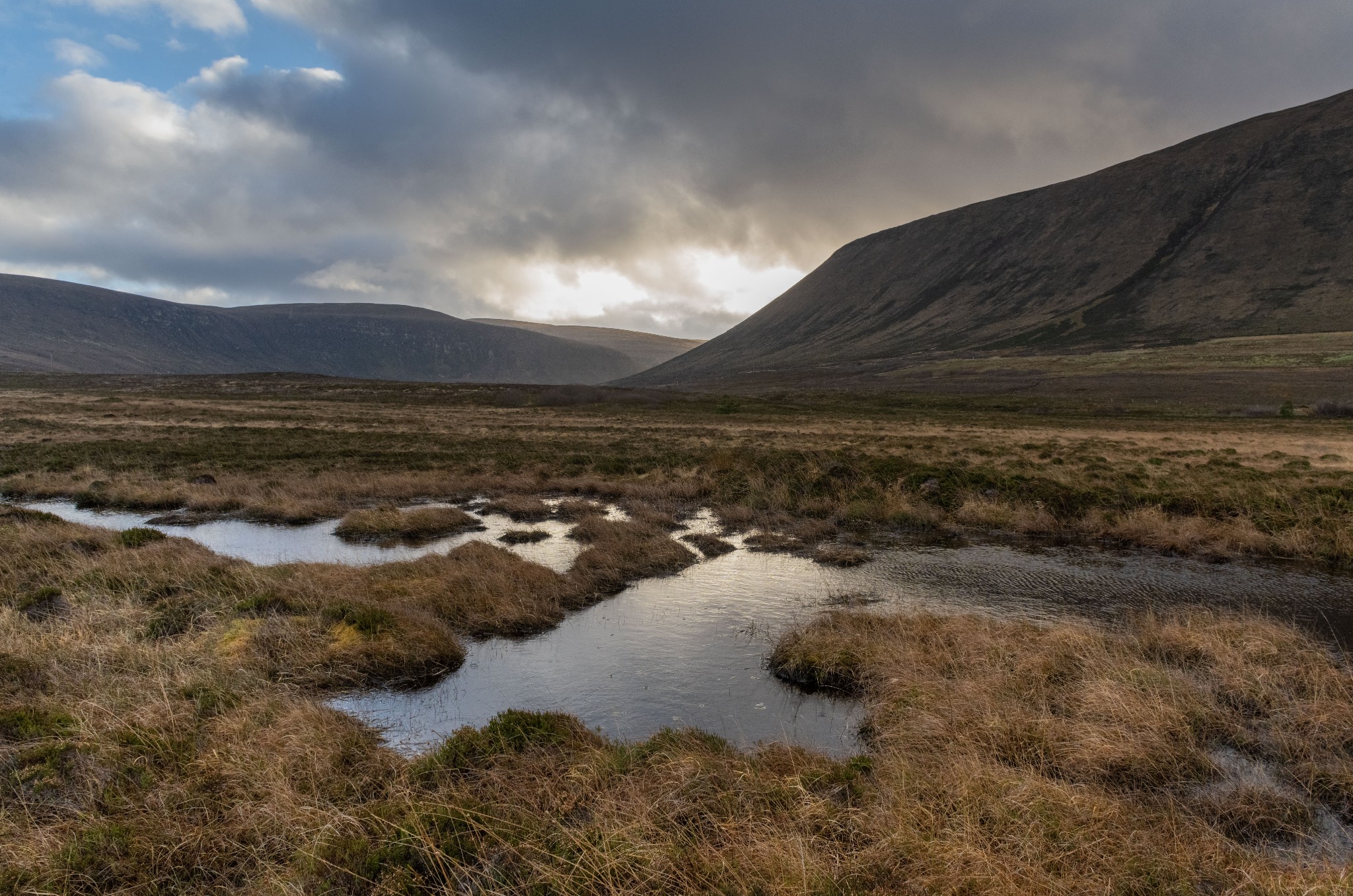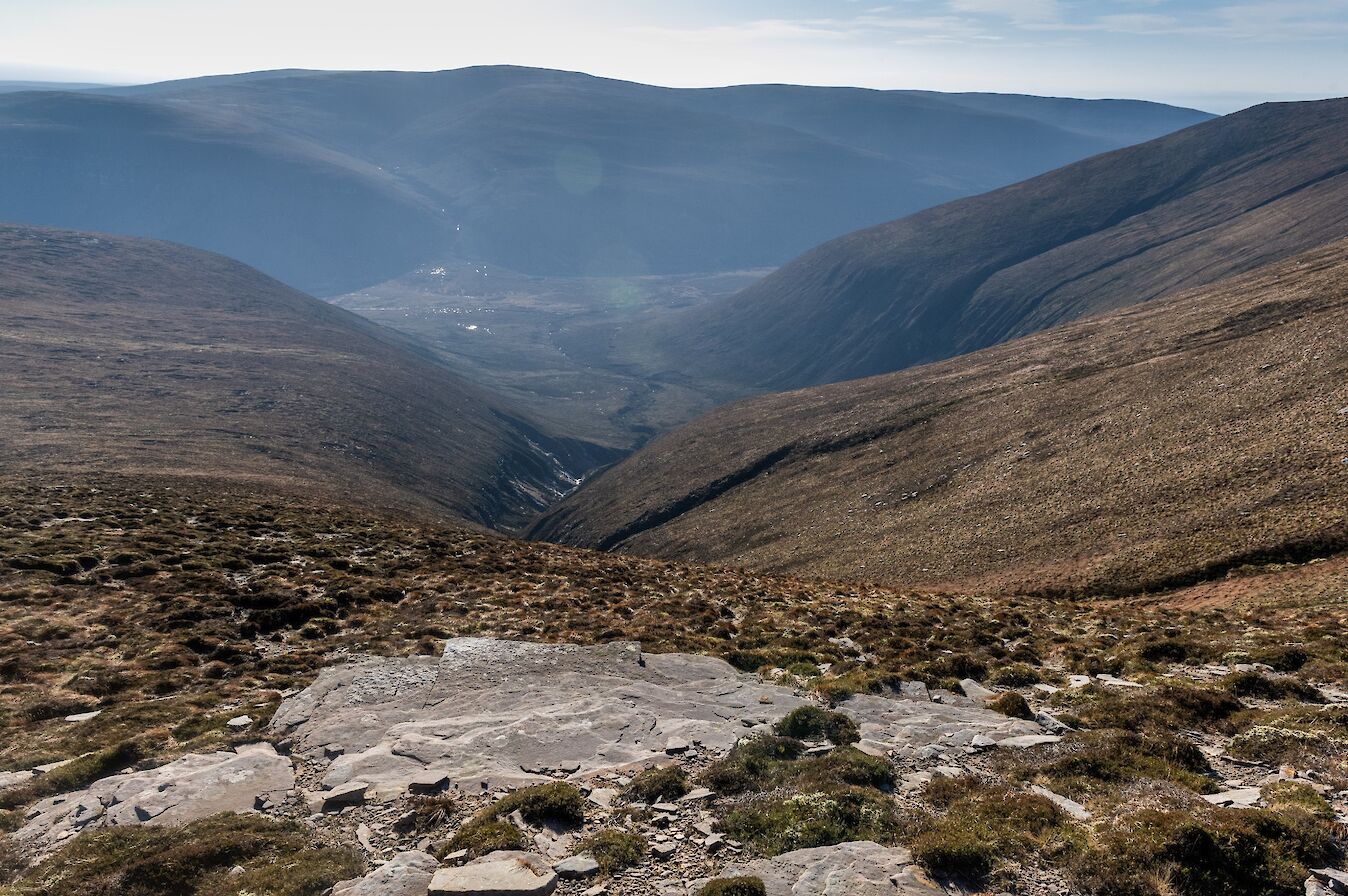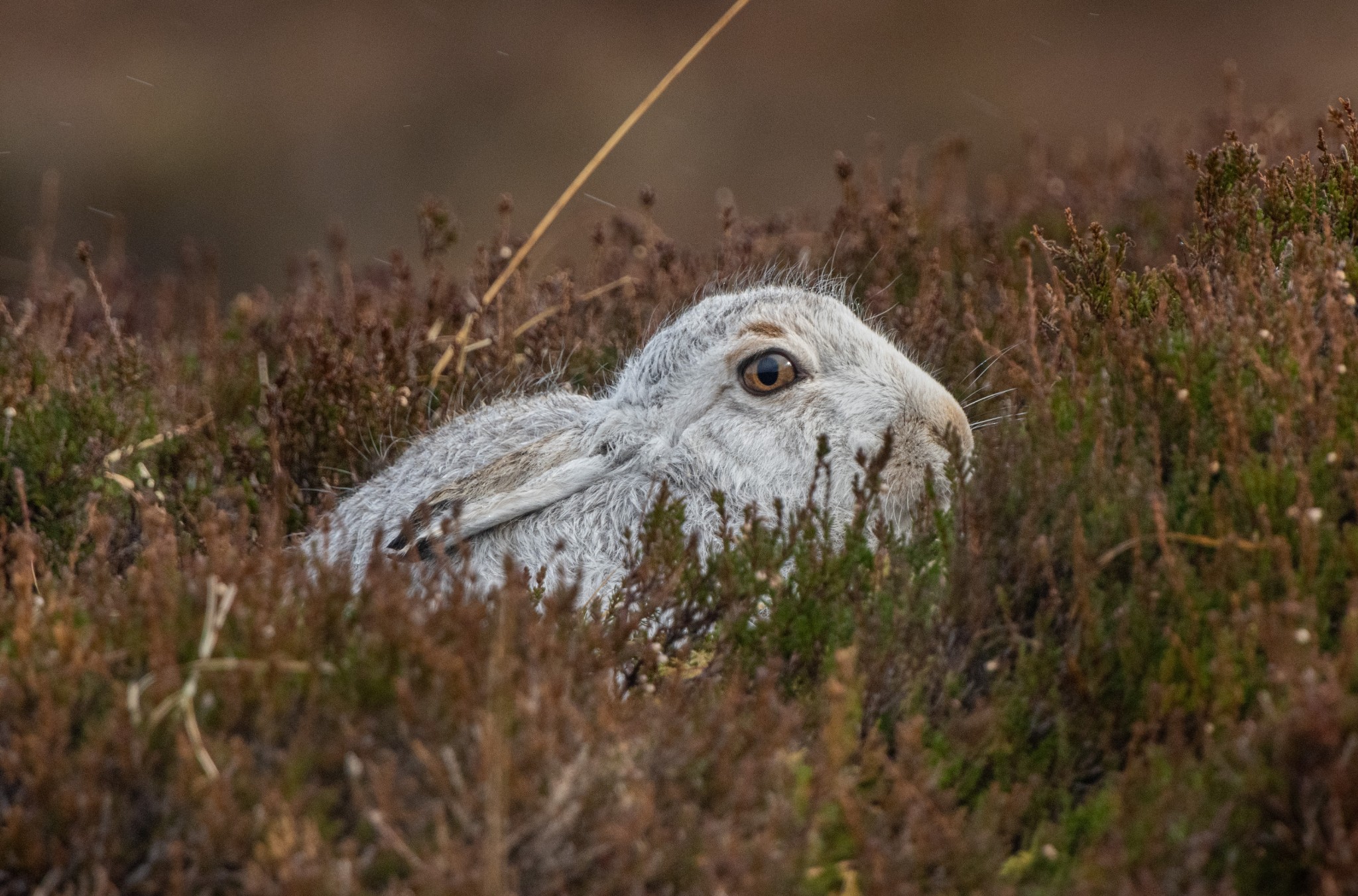As you drive north from Lyrawa Hill on the island of Hoy, the stretch of water known as Bring Deeps lies before you on the right towards the Orkney Mainland - an impressive enough vista.
However, it’s as you turn the corner towards Quoyness that one of my favourite and imposing views comes into sight, the domineering steep sides of Ward Hill.
With an elevation of 479 metres or just over 1,500ft this makes it the highest point in Orkney. It also sits within the RSPB’s Hoy reserve, a wonderfully diverse and dramatic reserve boasting native woodland, moorland, sub-alpine heath, blanket bog and towering sea cliffs. Such is the beauty and importance of the habitat here and the plethora of wildlife it supports it’s no surprise to find out it has just about every designation going, a Site of Special Scientific Interest and a National Scenic Area to name a few.
My interest on this visit however isn’t so much to do with the beauty of the hill itself but in one of the charismatic creatures to be found inhabiting its slopes and summit; the mountain hare. I do have a confession to make though, as I drive towards Rackwick and the road curves almost right alongside the slopes. The hill feels overbearing and claustrophobic and I’m a little intimidated, not least because in all the years I’ve lived in Orkney I’ve never climbed Ward Hill!
There is partly a good reason for this. When previously photographing mountain hares I’ve had some success on Ward Hill’s sister hill, Cuilags, with the deep Glen of Kinnaird to the west separating them. There’s no getting away from it though, parts of Ward Hill are very steep. The northern side in particular looks craggy and uninviting so I start opposite the Dwarfie Stane and slowly make my up the hill. Before I do I scan for birds of prey and I’m almost immediately rewarded with the sight of a female hen harrier floating down the hill into the valley below.
It’s been wet recently but the heather and grasses underfoot feel mercifully dry and the going not too bad until the topography turns significantly steeper towards the summit of ‘Haist’ at 333 metres. Zig-zagging the last section makes life a little easier and safer before flattening out. From here I get a fantastic view of the Dwarfie Hamars to the south east and Rackwick to the south west, though the light is a little hazy. The sky above however is bright blue with wispy cirrus clouds, a rare blue-sky day, but there is a nip in the air that reminds me this is still winter.
I’m lamenting how quiet it is, when I see a pair of ravens converge high up, their ‘cronk cronk’ call is loud and clear and as I’m remembering that ravens are often the first to spot and therefore give away the position of eagles, as if by magic a male golden eagle soars past them. He drops into the bowl-shaped valley below known as the ‘Nowt Bield’ before rising high and disappearing into the hazy light. What a sight to raise the spirits.
I turn a little north east and stop at the Howes of Quoyawa, surely one of the most dramatic viewpoints in all of Orkney. This isn’t so much of a hill as a cliff face, covered in loose and brittle rocks on a very steep face. Beyond Moaness and the farmland below lies the island of Graemsay and Stromness, a beautiful view, but with some of the hill beside me in heavy shade I can’t help feeling there is a strange atmosphere here. Perhaps the dwarves and trows of Hoy are still at large!
I ascend the last incline towards the summit and I’m met with a harsh landscape; the rocks deeply pockmarked with the action of wind and water. After all that effort there isn’t a mountain hare to be seen, the only sign one was ever here is a clump of its fur stuck in the heather.
I enjoy the light on my face and feel good that I have finally made it up Ward Hill. The lack of hares is a little disappointing but I make time to come back to Hoy a week later and try a different site further south.
On my second visit, I’ve no longer lifted my binoculars and scanned the hillside than I spot two mountain hares, both nestled in the deep heather. This is no blue-sky day like my Ward Hill adventure though. The forecast was for light winds and light cloud with sunshine, but a biting north wind drives stinging hailstones at my face, and like the mountain hares who often endure this weather, I utilise the only shelter here - the peat banks.
The hare in front of me clearly knows I’m here, at first its long dark tipped ears are prone but as the hail becomes heavier it flattens its ears.
The mountain hare is the UK’s only native Lagomorph, the brown hare and rabbit both introduced species. However, the mountain hare isn’t native to Orkney and is thought to have been introduced several times to the hills of Hoy as well as some of the north isles where it no longer exists. I for one though am glad to see it here. Hoy is much more like mainland Scotland in many regards and to have species such as golden eagle and mountain hare here feels like we have a special corner of that upland Scottish habitat all to ourselves.
In summer their coat is a grey-brown colour which makes them hard to spot against the moorland vegetation. Not so today. Their winter plumage is bright white and they stick out like sore thumbs. Snow cover in Orkney during the winter isn’t all that common, even in Hoy, and so I often rejoice when the hills have even just a dusting, knowing that the hares’ chances of being predated are reduced somewhat.
The individual before me is sheltering in what is known as a ‘form’. It’s not a burrow and if the hare wasn’t sitting in it, you would be hard pressed to even know there was a depression underneath it given how shallow the ‘form’ is.
Sitting here I’m starting to feel the cold despite my many layers. The mountain hare has no such problem. Its grey underfur is especially soft and warm, this adaptation allowing it to live in such a harsh environment.
I leave this one in peace and head over the hill. Again, ravens accompany me but luckily for the hares there’s no eagle this time. The re-appearance of white-tailed eagles and now the return of the golden eagle to Hoy’s skies means the mountain hares here lead a much more charmed life. That’s not to say the hares are completely out-gunned when it comes to evading the clutches of these predators. They know to run up-hill should they be in danger - it’s far harder for a big bird like an eagle to change course and have to start flapping up-hill again in pursuit should it miss the first time.
There are now ten individuals on the hillside, as singles, pairs and three together. The population densities of mountain hares are known to fluctuate periodically - it would be interesting to know if the hares in Hoy follow the same pattern as their counterparts elsewhere in Scotland.
As I move back down the hill three red grouse burst from beneath my feet, wings whirring and carrying them a short distance up the hill. The fortunes of mountain hares and red grouse are closely entwined on Scottish moors managed for the purpose of grouse shooting as the hares also do well in the mix of long and short heather. However, with no habitat managed for this purpose in Orkney, the density of hares and red grouse here is probably more reflective of that unmanaged environment.
As the winter wanes and the days lengthen, slowly but surely the hares’ white winter pelage will change to smoky brown. Females will be seen rebuffing the attention of males keen to mate but will eventually have one to three litters of leverets, though those will be incredibly hard to spot in the heather.
As I sit watching the hares, I can’t help feel that Orkney in the grand scheme of things is a small place, little of it remaining untouched by our hand. I remind myself though that if eagles still soar above me and mountain hares bless our dark hillsides then Hoy at least is still a properly wild place.
Find out more about Raymond’s work via his official website. You can also find him on Facebook, Twitter and Instagram.





